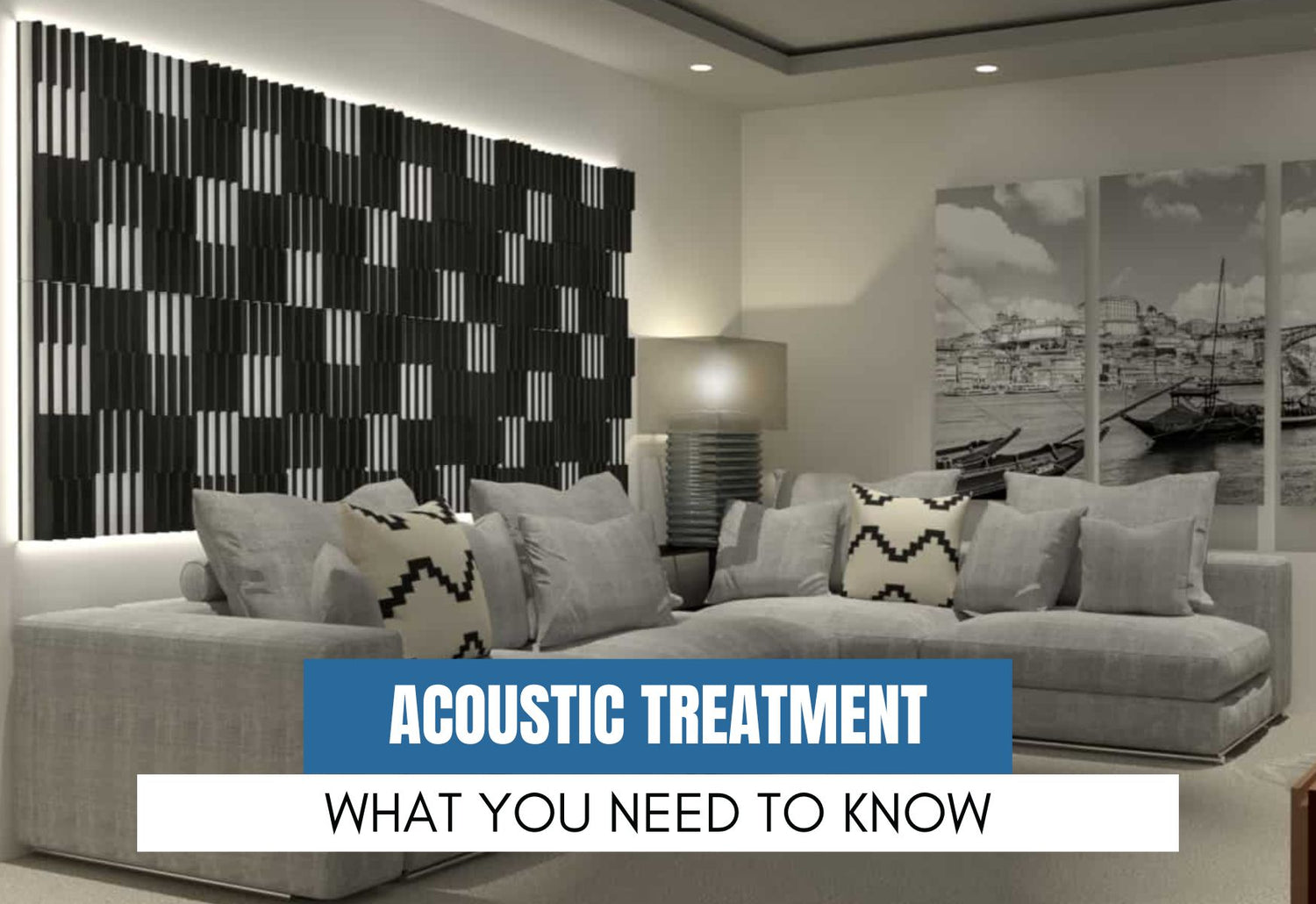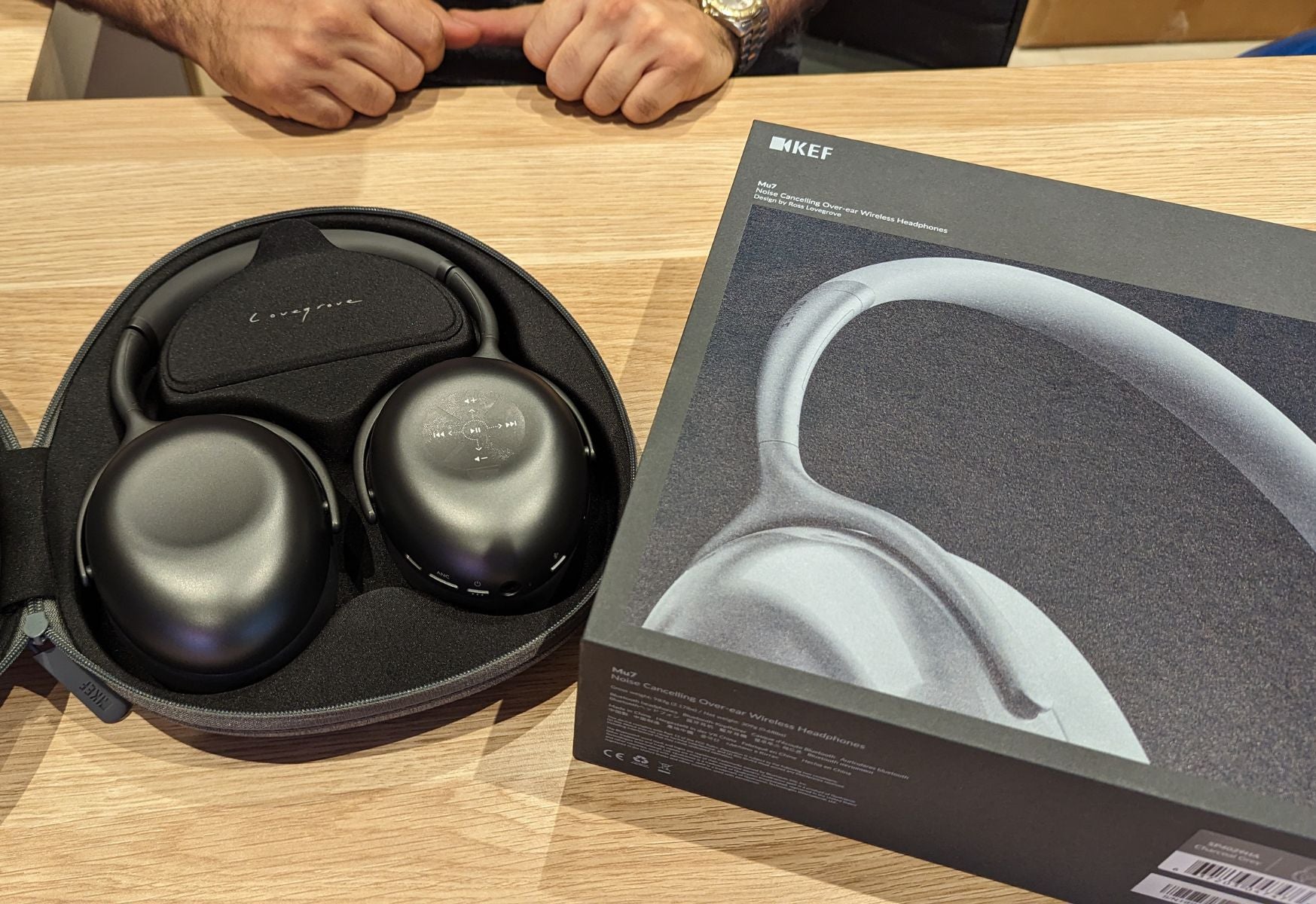The Frustration with Acoustics
If you've ever looked into acoustic treatment, you'll likely be frustrated. You'll dive into a world of absorption and diffusion panels, frequency absorption charts, supposed bass traps, and a huge range of opinions from backyard charlatans to acoustic engineers proclaiming to Gandalf in the world of audio.

We recently partnered with Noizy Head (noizyhead.com), a company that specialises in acoustics and audio solutions. With a strong track record of building recording studios all over the world supported by a strong foundation in civil and acoustic engineering, we consider them to be one of the authorities in the world. Most of the information in this article comes from them, and we enourage you to get in touch with Noizy Head for any further information.
Before we get started into the meat of the article, we just want to throw out some strong firm opening statements:
- Acoustic Engineering is a proper scientific field. Experts study for years to build their academic foundation before entering the field to build their professional practical experience. As with any science, there are right and wrong ways of executing the principles, and as with any science, there is variation in the way of interpreting the results.
- It is a complicated field, but not one that is unexplainable. Everything in the world of acoustic treatment can be explained in simple English. Beware the "expert" who attempts to make it more complicated than it has to be - their jobs should be to demystify this science into basic terms that all can understand.
- Not everything produced under the category of "acoustic treatment" is actually acoustic treatment. We'll go into more detail in this, and following, articles that helps you identify what is actually designed correctly versus expensive pieces of packing foam.
- Why it's relevant to a listening room, home theatre and recording studio
- Sound proofing vs Sound treatment
- Reverberation Time, or RT60 time
- The differences between acousticians treating for everyday life vs a dedicated listening room.
Why is Acoustically Treating a Room Important?
To understand why this is important, we need to understand two things.
Firstly, a sound wave will bounce off most surfaces, just like a pool ball will bounce of the side rail of a pool table. Sound propagates through air as a compression wave, meaning that adjacent air particles bump into each other in a linear fashion, and when this compression wave hits a hard surface it will reflect off this wall at an angle equal to its entry angle. This is means that if you fire a sound wave 90 degrees to a wall, it will bounce back the same way it came, i.e. 90 degrees.
Firstly, a sound wave will bounce off most surfaces, just like a pool ball will bounce of the side rail of a pool table. Sound propagates through air as a compression wave, meaning that adjacent air particles bump into each other in a linear fashion, and when this compression wave hits a hard surface it will reflect off this wall at an angle equal to its entry angle. This is means that if you fire a sound wave 90 degrees to a wall, it will bounce back the same way it came, i.e. 90 degrees.

There's a LOT of things that affect this behaviour, so it's a little more complicated in real life, but that's the principle to understand.
Secondly, let's look at the speed of sound. The speed of sound is 330 metres per second. In kilometres per hour terms, which everyone has a reference for from being in a car, thats 1188 km/h - bloody quick!
Let's look at an average listening room, say 4 metres wide by 6 metres long, and we look at a theoretical, individual, isolated sound wave's behaviour in the room. At 330 metres per second, along the wall that is 4 metres long, that sound wave will cover that distance in 0.012 seconds. And, because we now know that sound waves bounce off surfaces, our sound wave is going to bounce back. And bounce again, and again. After 1 second has elapsed, our theoretical sound wave will have bounced along our 4 metre wall over 83 times, all of them theoretically audible to you as the listener.

Now, again, not quite as simple as that (as you'll find out as you read our articles), but the example is just to convey the principle.
Understanding these two concepts makes it very easy to understand why treating a room is important. In a listening environment, we want to be hearing the audio the equipment is producing, not all the extra sound bounces that the room is creating and masking the original audio from the system.
Sound Proofing vs Sound Treatment
Something that is commonly misunderstood is sound proofing vs sound treatment. Both of them are forms of controlling sound waves, but they are completely different in motivation and application.
Sound treatment, as we touched on above, is the process of acoustically treating a room to improve the intelligibility of the people or audio systems in that room.
Sound proofing, on the other hand, is the process of reducing or eliminating sound transmission between spaces.
It's quite possible to have a room that is sound proof that isn't sound treated, vice versa, or both. Treating a room does little to proof a room, and likewise, sound proofing a room does little to treat a room.
Sound treatment, as we touched on above, is the process of acoustically treating a room to improve the intelligibility of the people or audio systems in that room.
Sound proofing, on the other hand, is the process of reducing or eliminating sound transmission between spaces.
It's quite possible to have a room that is sound proof that isn't sound treated, vice versa, or both. Treating a room does little to proof a room, and likewise, sound proofing a room does little to treat a room.
Reverberation time, or RT60 time
As we now know, sound bounces off walls, ceiling and floors in a room. How much this sound bounces is quantified in the time it takes for the initial sound wave to die off by 60 decibels (dB). In real life terms, 60 dB is about the level of a normal conversation in a quiet room, so the RT60 measurement is the difference between the sound level of that normal conversation, and the awkward pauses in between.
If you've ever been on a private property inspection, you'll notice that just talking to the real estate agent can be a bit difficult. It seems very loud and echoey, and it can be hard understanding what people are saying in these environments. That's because there's no furnishings, furniture or soft surfaces to absorb the sound bouncing around, and so you end up with a longer RT60 time (4+ seconds).
There are "ideal" ranges for RT60 times in listening rooms, and it is dependent on room size. But to give you some idea of numbers, we're talking about RT60 times of between 0.2 to 0.5 for most of the rooms we have our systems in. To control RT60 times, acoustic engineers will use a range of absorbers and diffusers placed at strategic locations to manipulate the behaviour of sound in a room.
The point of us making you aware of RT60, if you weren't already, is to emphasise the science behind room treatment. It's not an arbitrary process, rather a specialisation backed by science. The interpretation of the science is where there is room to move. An analogy (if you've read any of our other blogs, you know how much we love analogies) - we know adding 1 teaspoon of sugar to a cup of coffee will sweeten the coffee exactly the same way as it did when you made it yesterday (science), but how sweet that is perceived will vary from person to person (interpretation).
If you've ever been on a private property inspection, you'll notice that just talking to the real estate agent can be a bit difficult. It seems very loud and echoey, and it can be hard understanding what people are saying in these environments. That's because there's no furnishings, furniture or soft surfaces to absorb the sound bouncing around, and so you end up with a longer RT60 time (4+ seconds).
There are "ideal" ranges for RT60 times in listening rooms, and it is dependent on room size. But to give you some idea of numbers, we're talking about RT60 times of between 0.2 to 0.5 for most of the rooms we have our systems in. To control RT60 times, acoustic engineers will use a range of absorbers and diffusers placed at strategic locations to manipulate the behaviour of sound in a room.
The point of us making you aware of RT60, if you weren't already, is to emphasise the science behind room treatment. It's not an arbitrary process, rather a specialisation backed by science. The interpretation of the science is where there is room to move. An analogy (if you've read any of our other blogs, you know how much we love analogies) - we know adding 1 teaspoon of sugar to a cup of coffee will sweeten the coffee exactly the same way as it did when you made it yesterday (science), but how sweet that is perceived will vary from person to person (interpretation).
Acoustically Treating a Room for Speech vs Audio Systems
In everyday life, we are surrounded by acoustic treatment. You might not notice them, but once you start recognising acoustic treatment you start seeing it everywhere. All the circular discs hanging from the ceiling in shopping centres, the pinholes on the walls in carparks, the wave panels on the ceiling of your local brewery - all of these items are acoustic treatment, designed to reduce the amount of sound that bounces around these spaces and improve the quality of life.
Just like life, you tend to only notice their absence, rather than presence. It's particularly obvious in restaurants - if you've been to a restaurant that doesn't have acoustic treatment, you'll have to shout across the table to talk to your dining companion, even if the restaurant is only half full.
Treating a space for speech versus an audio system is very different. For speech, is actually pretty easy - all the engineer has to do is calculate the size of the room, how many people could be in there at one time, assume standard sound pressure levels, with the hardest thing in the process being the colour choice of acoustic treatment.
For audio systems its much more complicated. First off, rooms with audio systems are pressurised by the speakers in the room, up to 110-115 dB in some cases (real life examples - that's like standing next to car horn or a live concert). So that's a lot more audio energy to deal with. Additionally, there is the concept of a live end and a dead end, the live end being where the audio is coming from, and the dead end being where you don't want the sound to reflect back. This means that the room has to be treated asymmetrically, with a lot more calculations to consider. This is why acoustic consultants charge $500-$600 per hour for a project - it can be a lot of work.
We mention this to help you have an informed discussion with whoever you're talking to. If the salesperson you're taking to says "oh just whack up some absorbers and diffusers there" then maybe its time you start talking to someone else.
Just like life, you tend to only notice their absence, rather than presence. It's particularly obvious in restaurants - if you've been to a restaurant that doesn't have acoustic treatment, you'll have to shout across the table to talk to your dining companion, even if the restaurant is only half full.
Treating a space for speech versus an audio system is very different. For speech, is actually pretty easy - all the engineer has to do is calculate the size of the room, how many people could be in there at one time, assume standard sound pressure levels, with the hardest thing in the process being the colour choice of acoustic treatment.
For audio systems its much more complicated. First off, rooms with audio systems are pressurised by the speakers in the room, up to 110-115 dB in some cases (real life examples - that's like standing next to car horn or a live concert). So that's a lot more audio energy to deal with. Additionally, there is the concept of a live end and a dead end, the live end being where the audio is coming from, and the dead end being where you don't want the sound to reflect back. This means that the room has to be treated asymmetrically, with a lot more calculations to consider. This is why acoustic consultants charge $500-$600 per hour for a project - it can be a lot of work.
We mention this to help you have an informed discussion with whoever you're talking to. If the salesperson you're taking to says "oh just whack up some absorbers and diffusers there" then maybe its time you start talking to someone else.



